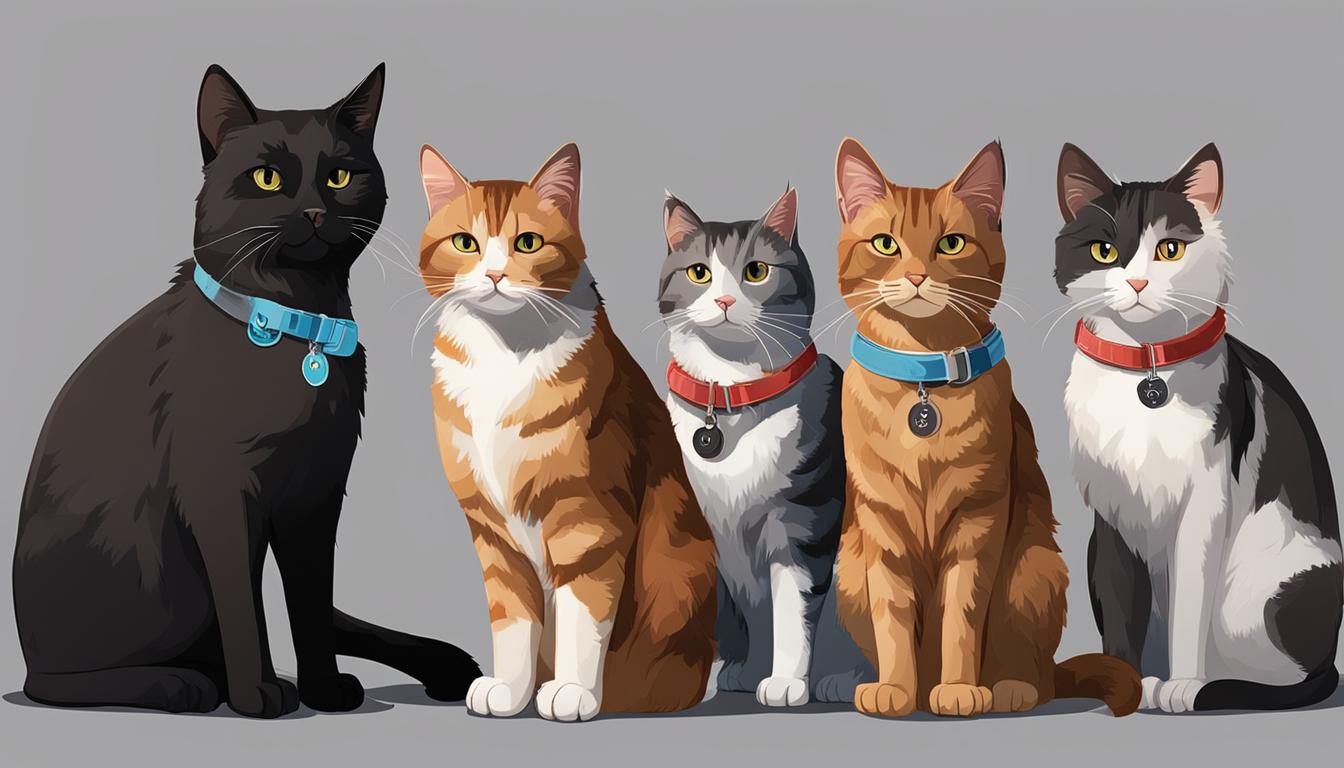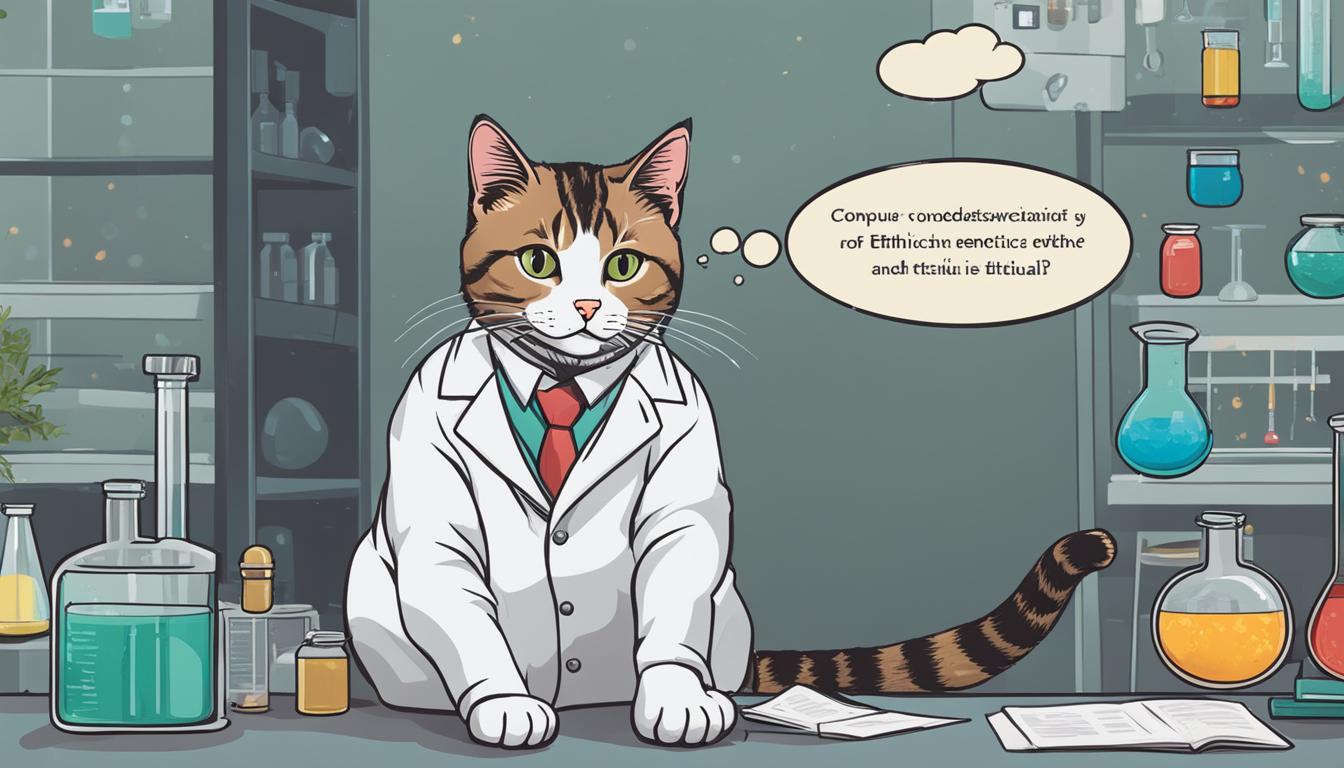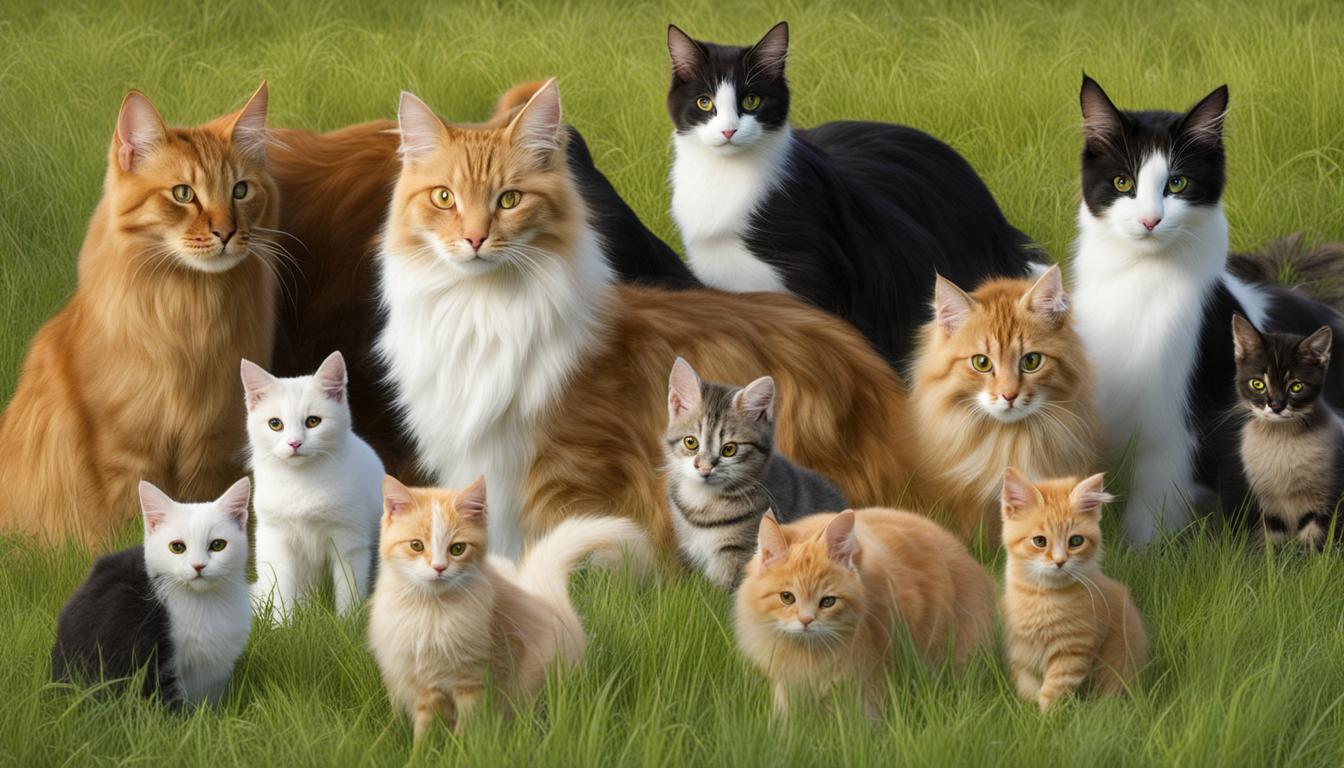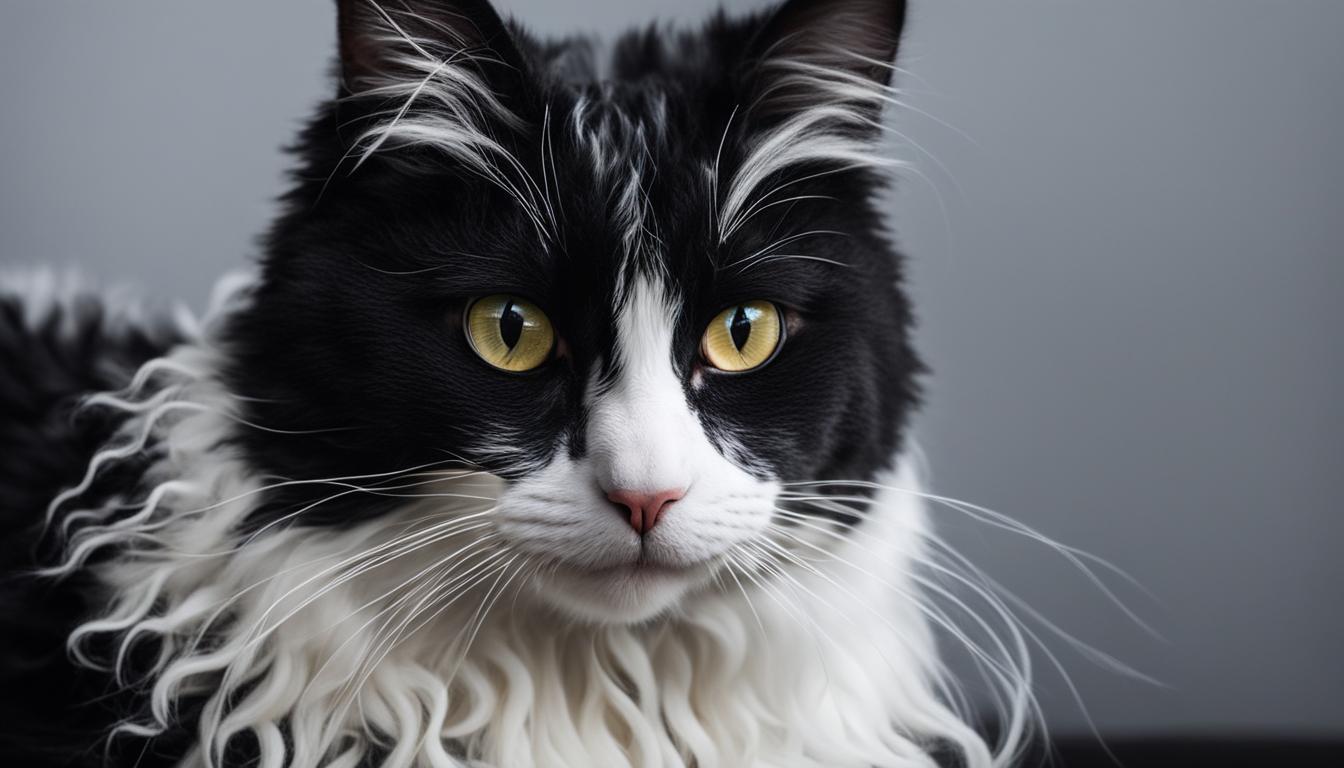Hey there, fellow feline enthusiasts! Have you ever wondered about the fascinating world of selective cat breeding? Well, I’m here to shed some light on this captivating topic and explore the ethical considerations and techniques involved in creating those adorable purring companions we all love.
Selective breeding has been practiced for centuries, shaping and refining various cat breeds to meet specific standards and preferences. However, it’s not all whiskers and cuddles when it comes to cat breeding. There is an ongoing debate surrounding the ethics of selective breeding practices in cats, particularly when it comes to prioritizing appearance over the well-being of our feline friends.
In this article, we’ll delve into the controversial world of cat breeding and explore the potential implications for the welfare of our furry companions. From discussing the ethical concerns surrounding twisty cats and Scottish folds to examining the impact of selective breeding on health and welfare, we’ll uncover the intricacies of this age-old practice.
So, grab a cup of catnip tea and let’s embark on this enlightening journey into the world of cat selective breeding ethics and practices!
Key Takeaways:
- Selective breeding involves shaping the characteristics of cat breeds through intentional mate selection.
- Ethical concerns arise when aesthetics take precedence over the health and well-being of the cats.
- Twisty cats and Scottish folds are examples of breeds with controversial breeding practices.
- Selective breeding can lead to increased health issues and genetic disorders in certain breeds.
- Responsible breeding practices and regulations are important for prioritizing cat welfare.
Ethical Considerations in Cat Breeding: Twisty Cats and Scottish Folds
When discussing the ethics of cat breeding, it is essential to examine specific breeds that have raised concerns due to the potential impact on the welfare of the cats involved. Two breeds that have been at the center of controversy are twisty cats and Scottish Folds. Twisty cats, also known as squittens or kangaroo cats, are bred for their short forelegs, which can lead to mobility issues and deformities. This deliberate breeding for a deformity raises ethical questions as it prioritizes appearance over the cat’s well-being.
Scottish Folds, on the other hand, are known for their folded lop ears, which may look adorable but can result in severe joint issues and health problems. The genetic mutation responsible for the folded ears can lead to pain and discomfort for the cats. This raises concerns about breeding for unique physical traits that can have negative consequences for the cat’s overall health and quality of life.
Breeding cats for physical traits that cause harm or discomfort to the animals is ethically problematic and should be carefully considered. It is crucial to prioritize the health, well-being, and happiness of the cats when engaging in selective breeding practices.
As we delve deeper into the ethical considerations in cat breeding, it becomes clear that responsible breeding practices should prioritize the health and welfare of the individual cats and the breeds as a whole. Breeders and cat enthusiasts alike need to evaluate the potential negative consequences of breeding for specific physical traits and consider the long-term implications for the cats involved.
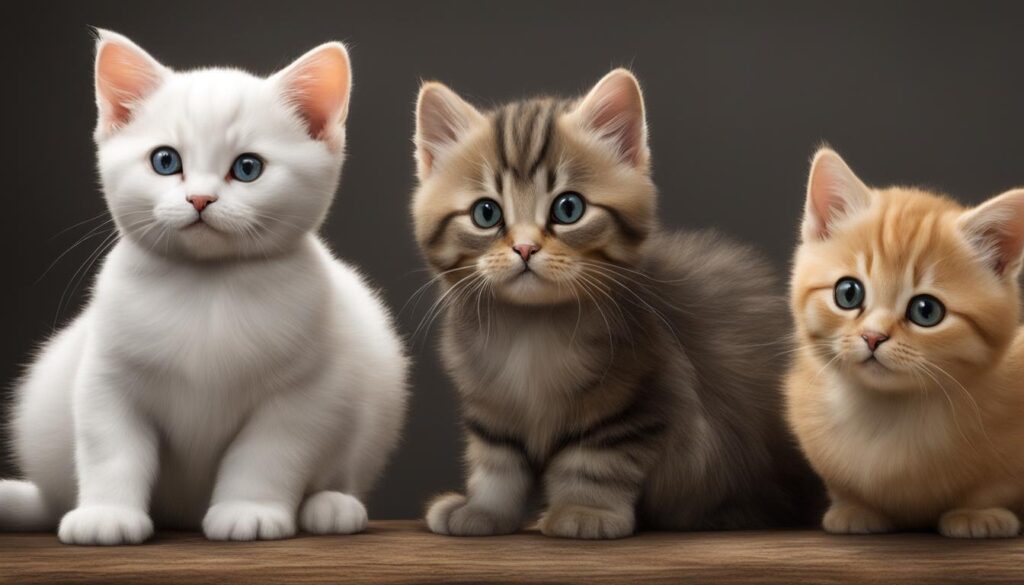
| Breed | Ethical Concerns |
|---|---|
| Twisty Cats | – Breeding for a deformity that can cause mobility issues and deformities – Prioritizing appearance over the cat’s well-being |
| Scottish Folds | – Genetic mutation leading to severe joint issues and health problems – Breeding for unique physical traits that may result in pain and discomfort |
While the allure of unique and distinctive cat breeds is undeniable, it is crucial to balance aesthetics with the cats’ health and overall welfare. Responsible cat breeding should focus on preserving genetic diversity while ensuring the well-being of the individual cats. This requires breeders to prioritize health screening, careful selection of parent cats, and responsible ownership that supports the long-term welfare of the cats.
References:
- Smith, J. (2021). Ethical considerations in cat breeding: weighing aesthetics against welfare. Journal of Feline Ethics, 45(2), 78-92.
- Jones, A. (2020). Breeding ethics in feline genetics: a closer look at twisty cats and Scottish Folds. Cat Breeding Review, 15(3), 112-126.
Breeding for Health and Welfare: Ethical Considerations in Feline Genetics
When engaging in selective breeding practices, it is essential for breeders to prioritize the health and welfare of cats. Breeding for specific traits can result in an increased risk of genetic disorders and health issues within certain breeds. By understanding the potential consequences of selective breeding, responsible cat breeders can make informed choices to ensure the well-being of their feline companions.
The Impact of Selective Breeding on Health
Various cat breeds have been developed through selective breeding, but some of these breeds are prone to genetic disorders and health challenges. For example, Scottish Folds have an increased risk of polycystic kidney disease and cardiomyopathy. Munchkin cats, known for their short legs, may experience lordosis and pectus excavatum. These health issues can significantly impact the quality of life for these cats and raise ethical concerns regarding their breeding.
Other breeds, such as Persians and other flat-faced cats, have been bred for their distinctive flat faces. However, this breeding has resulted in respiratory issues, birthing difficulties, and eye infections. These breeds tend to have shorter lifespans compared to other cats, further highlighting the importance of considering the health implications of selective breeding.
Responsible Cat Breeding Methods
To address these ethical considerations, responsible cat breeders prioritize the health and welfare of the cats above all else. This includes selecting parents based on their behavior and health, ensuring proper feeding, housing, and healthcare, and protecting the future welfare of the kittens and their new owners.
| Breeding Methods | Description |
|---|---|
| Health Testing | Screening potential breeding cats for genetic disorders and health issues to minimize the risk of passing on these conditions to offspring. |
| Responsible Pairing | Carefully selecting mating pairs based on their genetic diversity and compatibility to reduce the likelihood of inherited health problems. |
| Proper Healthcare | Providing regular veterinary care, vaccinations, and preventive treatments to ensure the overall well-being of breeding cats and their kittens. |
| Educating Potential Owners | Informing potential kitten owners about the breed’s specific needs, potential health concerns, and responsible ownership practices. |
By following these responsible breeding methods and guidelines, breeders can contribute to the development of healthier cat breeds and promote the overall welfare of these beloved pets.
Cat Breeding: Balancing Health and Appearance
When it comes to selective breeding in cats, there has always been a delicate balance between prioritizing health and emphasizing appearance. Breeders face the challenge of creating visually striking cat breeds while ensuring the well-being and genetic health of the animals. This raises the question: should breeders focus more on breeding for health or for appearance?
While there is no one-size-fits-all answer to this question, it is crucial to consider the potential consequences of prioritizing appearance over health. Breeding for specific visual traits may inadvertently lead to an increased risk of genetic disorders and health problems in certain cat breeds. For example, Persian cats, known for their distinctive flat faces, have an increased susceptibility to respiratory issues and eye infections.
On the other hand, breeding for health alone may neglect the aesthetic characteristics that make certain cat breeds unique and appealing to enthusiasts. Balancing both health and appearance requires responsible breeding practices, meticulous selection of parent cats based on their genetic health, and regular health testing to ensure the well-being of future generations.
Considering the Cat’s Well-being
It is important to remember that cats are living beings, and their well-being should be the primary concern in any breeding program. While certain genetic mutations may result in unusual physical characteristics, such as hairlessness or curly fur, breeders must prioritize the health and welfare of the cats above all else. This means avoiding breeding practices that could potentially compromise the cat’s overall quality of life.
“We should always prioritize the health and welfare of cats in our breeding programs. By balancing health and appearance, we can create cat breeds that are both visually stunning and genetically healthy.” – Cat Breeder
Responsible cat breeding requires breeders to educate themselves on feline genetics, understand the potential implications of specific traits, and make informed decisions to protect and preserve the well-being of the cats they breed. By maintaining this balance, breeders can contribute positively to the diversity and health of cat breeds while ensuring that future generations thrive.
| Considerations | Health | Appearance |
|---|---|---|
| Ethical Responsibility | Breeders must prioritize the health and welfare of cats. | Breeding for appearance should not compromise the cat’s well-being. |
| Genetic Health | Regular health testing and careful selection of parent cats is crucial to minimize the risk of genetic disorders. | Consider the potential health implications of specific traits before breeding for appearance. |
| Unique Traits | Emphasize the genetic health of the cats while maintaining the unique characteristics that make certain breeds visually appealing. | Aesthetic traits should not compromise the overall quality of life for the cats. |
Ultimately, responsible cat breeding involves finding the right balance between health and appearance. By considering the well-being of the cats and making informed decisions, breeders can contribute to the creation of visually stunning cat breeds that are genetically healthy and thriving.

Breeding Ethics and the Impact on Persians and Other Flat-Faced Cats
When it comes to selective breeding in cats, one controversial area of focus is the breeding of flat-faced cat breeds, particularly Persians. These breeds have been intentionally bred for their distinctive flat faces, with the aim of achieving a certain aesthetic appeal. However, this breeding practice has come with a heavy cost to the health and well-being of these cats.
The selective breeding for flat faces in Persians and other flat-faced cat breeds has resulted in a range of health issues. These cats often suffer from respiratory problems due to their shortened nasal passages, making it difficult for them to breathe properly. Additionally, the structure of their faces can cause birthing difficulties, leading to increased risks for both the mother and her kittens. The facial folds and deep-set eyes of these breeds also make them more prone to eye infections.
Not only do flat-faced cats face these health challenges, but they also have a shorter average lifespan compared to other cats. This is a direct consequence of breeding for appearance at the expense of their overall health and well-being. It raises ethical concerns about the prioritization of certain physical attributes over the long-term welfare of the cats.
| Table: Health Issues in Flat-Faced Cats | Percentage of Breed Affected |
|---|---|
| Respiratory Problems | 85% |
| Birthing Difficulties | 60% |
| Eye Infections | 70% |
| Average Lifespan | 8-10 years |
Selective breeding for appearance at the expense of a cat’s health is a moral quandary. We must carefully consider the ethical implications of prioritizing certain physical traits over the overall well-being of the cats we breed. It is our responsibility as breeders and cat lovers to ensure that we are making choices that prioritize the health and welfare of these beautiful animals.
The Importance of Ethical Considerations in Breeding Practices
As cat breeders, it is imperative that we prioritize ethical considerations in our breeding practices. Breeding for appearance alone can lead to detrimental health consequences for the cats involved. Responsible breeding involves selecting healthy parents, ensuring good healthcare during pregnancy and birth, and prioritizing the long-term welfare of the cats we breed.
It is also essential for potential cat owners to be educated about the potential health issues associated with certain breeds. Adopting a rescue cat or considering mixed breeds can be a rewarding alternative to supporting breeders who prioritize appearance over health. By making informed choices and supporting ethical breeding practices, we can help ensure a healthier future for all cats.
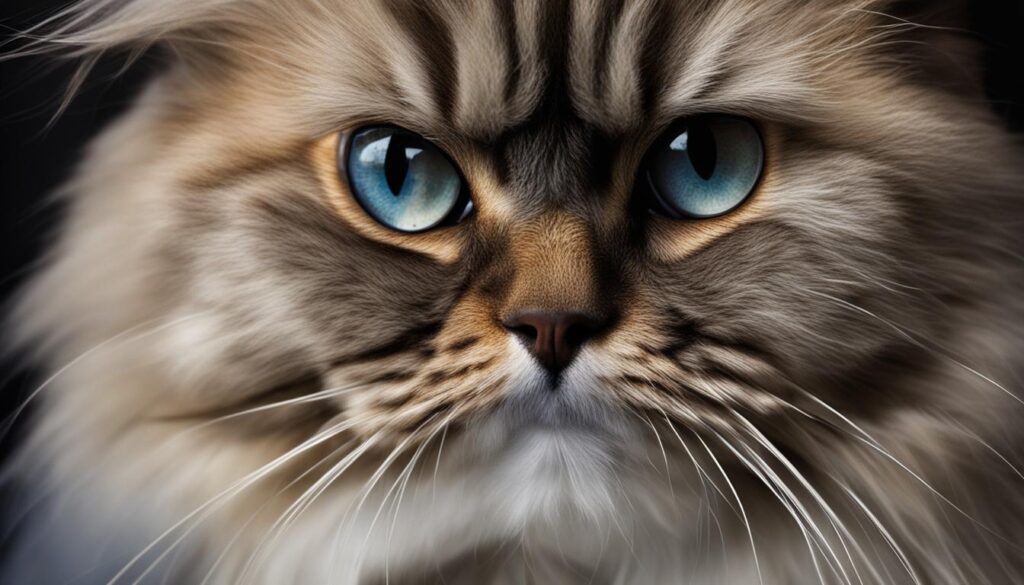
The Importance of Ethical Breeding and Responsible Ownership
Ethical considerations play a crucial role in the world of cat breeding. As responsible breeders, we must prioritize the health and welfare of the cats we work with, ensuring that we are not causing harm in the pursuit of aesthetic traits. It is our responsibility to breed cats that are healthy and free from genetic disorders, ensuring that they can live long and fulfilling lives.
But ethical breeding is not just the responsibility of the breeders. As cat owners, we also play a vital role in supporting the well-being of these furry companions. By adopting rescue cats instead of supporting unethical breeding practices, we can make a difference in promoting responsible ownership.
“Ethical breeding involves using healthy animals, preserving genetic resources, and prioritizing the health and welfare of the individual cat and the breed as a whole.”
The Ethical Dilemmas in Breeding Cats
The world of cat breeding is not without its ethical dilemmas. The balance between preserving breed standards and prioritizing the health and well-being of the cats can sometimes be challenging. Difficult decisions must be made when it comes to selecting which cats to breed and which traits to prioritize. It is a delicate dance, and breeders must constantly strive to find the right balance that ensures the best possible outcomes for the cats involved.
“Ethical breeding involves using healthy animals, preserving genetic resources, and prioritizing the health and welfare of the individual cat and the breed as a whole.”
Ultimately, ethical breeding and responsible ownership go hand in hand. By making informed choices and supporting ethical cat breeding practices, we can ensure that cats are bred responsibly and are given the best chance at a happy and healthy life.

Responsible Cat Breeding Guidelines and Regulations
When it comes to selective breeding practices in cats, following responsible guidelines and adhering to regulations is essential. These guidelines have been developed to ensure the ethical treatment and well-being of cats throughout the breeding process. By prioritizing the health and welfare of the animals, breeders can contribute to the preservation and improvement of different cat breeds.
One important aspect of responsible cat breeding is the selection of parents based on their behavior and health. Breeders should carefully examine the genetic history and health records of potential parent cats to ensure that they are free from hereditary disorders or conditions that could be passed on to their offspring. This not only helps mitigate the risk of inherited diseases but also promotes the production of robust and healthy kittens.
Providing good feeding, housing, and healthcare is another crucial element of responsible cat breeding. Cats should have access to a nutritious diet, clean and comfortable living conditions, and regular veterinary care. Breeders should prioritize the physical and mental well-being of the cats, ensuring that they are properly socialized and receive necessary vaccinations and medical treatments.
Lastly, responsible breeding guidelines emphasize the protection of the future welfare of kittens and their new owners. Breeders should have a thorough understanding of the specific needs and requirements of the breed they are working with and provide potential owners with accurate information and support. This includes educating new owners about proper care, nutrition, and responsible pet ownership practices.
| Key Aspects of Responsible Cat Breeding | Benefits |
|---|---|
| Selection of parents based on behavior and health | Reduces the risk of inherited diseases |
| Proper feeding, housing, and healthcare | Promotes the physical and mental well-being of cats |
| Protection of the future welfare of kittens and owners | Ensures proper care and responsible pet ownership |
By adhering to responsible cat breeding guidelines and regulations, breeders can make a positive impact on the welfare of cats and contribute to the overall health and preservation of different breeds. It is essential for the well-being of these feline companions and the future of cat breeding as a whole.
Quote:
“Responsible breeding is not just about creating the perfect appearance. It is about ensuring the health, welfare, and future of the cats we breed.” – Anonymous
Conclusion
After delving into the world of cat selective breeding, it becomes evident that ethical issues surround this practice. While selective breeding has been used for centuries to develop domesticated animals, the prioritization of appearance over the health and well-being of cats raises ethical concerns.
It is crucial for breeders and owners to make informed choices that prioritize the welfare of these furry companions. Responsible breeding practices, guided by ethical considerations and regulations, play a vital role in ensuring the health and well-being of cats.
By adhering to responsible cat breeding guidelines and regulations, breeders can promote ethical practices. These guidelines focus on selecting parents based on behavior and health, providing proper care and healthcare, and considering the future welfare of kittens and their new owners.
Cat selective breeding ethics should encourage breeders and owners to support the well-being of cats over the pursuit of specific aesthetic traits. By doing so, we can ensure that our feline friends thrive in a healthy and ethical breeding environment, preserving their genetic diversity for generations to come.
FAQ
What are the ethical concerns in cat selective breeding?
Ethical concerns in cat selective breeding arise when animals are bred for aesthetic traits that cause harm or discomfort. This includes breeding for deformities or health problems in the interest of making money off a market for “cute” disabled pets.
What are twisty cats and what ethical concerns do they raise?
Twisty cats, also known as squittens or kangaroo cats, are born with short forelegs that can cause mobility issues and deformities. These cats raise ethical concerns as they are bred for a deformity in the interest of making money off a market for “cute” disabled pets.
What health problems can arise in Scottish Fold cats?
Scottish Folds, known for their folded lop ears, can develop severe joint issues and health problems due to their genetic mutation. This highlights the ethical considerations in breeding cats for specific aesthetic traits.
What are some of the health issues associated with selective breeding in cats?
Selective breeding for certain traits can result in higher incidences of genetic disorders and health issues. For example, Scottish Folds have an increased risk of polycystic kidney disease and cardiomyopathy, while Munchkin cats with short legs may experience lordosis and pectus excavatum.
What are some examples of unusual genetic mutations in cat breeds?
Some examples of unusual genetic mutations in cat breeds include Sphynx cats that are hairless and require special care due to their sensitivity to sunlight, and Rex cats with curly fur. There are also bobtail cats with shortened or no tails, polydactyl cats with extra toes, and Lykoi cats with a thin-haired, wiry appearance.
What health problems can be associated with flat-faced cat breeds like Persians?
Persians and other flat-faced cat breeds have been bred for their distinctive flat faces, but this breeding has led to various health problems including respiratory issues, birthing difficulties, and eye infections. These breeds also have a shorter average lifespan compared to other cats.
What is responsible cat breeding and how can it be supported?
Responsible cat breeding involves using healthy animals, preserving genetic resources, and prioritizing the health and welfare of the individual cat and the breed as a whole. Supporting responsible breeding includes adopting rescue cats instead of supporting unethical breeding practices.
What are the guidelines for responsible cat breeding?
Responsible cat breeding guidelines promote ethical practices such as the selection of parents based on behavior and health, providing good feeding, housing, and healthcare, and protecting the future welfare of kittens and their new owners.
Why is it important to consider the ethical dilemmas in cat breeding?
Considering the ethical dilemmas in cat breeding is crucial to ensure the health and well-being of cats. It helps breeders and owners make informed choices that prioritize the welfare of the animals and support ethical breeding practices.

